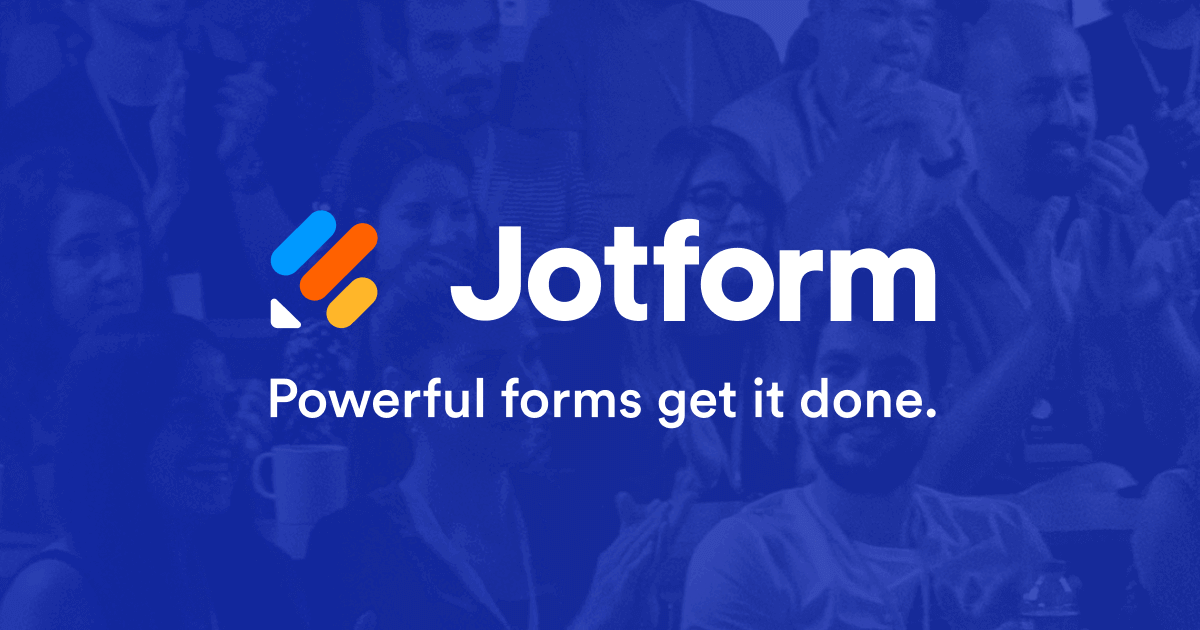
Key Takeaways
- AI governance establishes guidelines and ethics for managing AI methods, guaranteeing transparency, accountability, and compliance.
- With out correct governance, AI dangers embody bias, flawed choices, and regulatory violations that may hurt organizations.
- Key rules embody transparency, equity, and reliability, serving to companies construct belief and mitigate AI-related dangers.
- AI governance requires steady monitoring to detect biases, guarantee accuracy, and align with evolving rules.
- Challenges embody regulatory complexities, AI’s “black field” drawback, and balancing oversight with innovation.
- Future AI governance will deal with world requirements, cross-border cooperation, and moral AI developments.
AI governance is the gathering of guidelines and pointers for managing AI methods. It contains insurance policies, processes, requirements, and moral practices. These components information how AI is created, used, and monitored. AI governance ensures that superior algorithms align with societal values, comply with guidelines, and help accountable AI practices.
AI governance goes past coding and coaching fashions. It includes a transparent plan for utilizing AI safely and lowering dangers in real-world settings. The plan balances technical and nontechnical issues, from making explainable AI fashions to making sure truthful decision-making and knowledge safety.
Why AI governance issues
AI governance is changing into extra vital as machine studying grows. It’s now utilized in healthcare diagnostics, fraud detection, automated customer support, and nationwide safety.
Insufficient governance can result in flawed choices, expensive lawsuits, and reputational harm, particularly if AI bias or misuse is found. For instance, think about a financial institution utilizing an AI system to approve loans. If the algorithm isn’t examined for equity, it may unintentionally discriminate in opposition to sure teams, resulting in lawsuits and lack of belief.
Moreover, an AI governance framework promotes steady studying and adaptation. Repeatedly updating AI insurance policies helps organizations deal with new threats, adjust to rules, and maintain public belief in know-how.
AI governance balances innovation and oversight. It ensures that transformative potential doesn’t ignore key moral and societal safeguards.
Key rules of AI governance
A robust AI governance framework integrates elementary rules corresponding to transparency, accountability, equity, and reliability. These rules assist organizations mitigate dangers, deal with moral dilemmas, and set up belief with customers, workers, and regulators.
Transparency: Make AI comprehensible
AI choices ought to by no means really feel like a thriller. Transparency means documenting how an AI system is skilled, which knowledge sources it makes use of, and the way it arrives at its conclusions. As an illustration, if a advertising workforce makes use of a predictive mannequin to forecast customer churn, they need to be capable to clarify how buyer knowledge was collected, which variables had been most influential, and the way assured the system is in its predictions. Such openness additionally facilitates AI compliance by permitting auditors or regulators to confirm that knowledge utilization aligns with privateness and safety requirements. Finish customers achieve confidence when organizations brazenly share the system’s scope and limits, so transparency is a key driver of accountable AI.
Professional Tip
Strive Jotform AI Agents to satisfy buyer wants by offering personalised, real-time help that enhances consumer expertise, streamlines help duties, and ensures seamless AI-driven interactions—all whereas sustaining transparency and securely dealing with buyer knowledge.
Accountability: Preserve human oversight in AI
AI accountability ensures that human oversight stays integral at each stage of the AI life cycle. AI methods could make choices independently or with assist, so organizations should set clear traces of duty and possession. This may contain designating a chief AI ethics officer or forming a cross-functional AI oversight board made up of information scientists, authorized consultants, and enterprise leaders. These stakeholders conduct common critiques of AI efficiency, audit algorithmic choices, and promptly tackle rising points.
Accountability additionally extends to workers in any respect ranges, encouraging them to report anomalies or questionable outputs. A robust tradition of accountability helps organizations handle danger, comply with altering AI guidelines, and present they care about accountable AI use.
Equity and bias mitigation: Forestall discrimination
AI ought to by no means reinforce current biases or drawback sure teams. Nevertheless, biases can creep in if AI fashions are skilled on skewed historic knowledge. A well known instance is Amazon’s discontinued AI hiring tool, which reportedly displayed bias in opposition to feminine candidates as a result of its coaching knowledge was skewed towards male candidates. To keep away from these points, organizations ought to frequently carry out bias audits or use bias detection software program.
Security and reliability: Guarantee AI works as anticipated
Security and reliability govern the efficiency of AI methods below real-world situations. This precept is very crucial in high-stakes contexts corresponding to autonomous automobiles or AI-assisted medical diagnoses, the place even minor errors can carry critical penalties. Organizations use strict testing protocols to cut back dangers. Additionally they have fallback methods for human assist and monitor the system’s efficiency. A hospital utilizing AI for affected person triage could create alerts which inform medical employees when the system finds unclear knowledge or inconsistent affected person outcomes.
Organizations that target security and reliability construct public belief. Common stress testing, thorough documentation, and ongoing efficiency evaluation checks maintain AI options dependable.
Methods to implement AI governance frameworks
Implementing these rules requires a scientific strategy and collaboration throughout departments. Organizations can combine moral and accountable AI practices into their operational material by establishing governance constructions, formulating complete insurance policies, and conducting steady monitoring.
Set up governance constructions
AI governance begins on the high. Management should prioritize moral AI and create devoted roles corresponding to AI ethics officers or compliance managers.
Some bigger corporations set up AI governance committees, bringing collectively consultants from varied departments to information technique. Smaller organizations may maintain common AI danger administration conferences to debate mission proposals and updates. These our bodies examine whether or not new AI initiatives comply with nationwide or worldwide guidelines and greatest practices, serving to to stop unintended penalties earlier than they develop.
Develop clear insurance policies and procedures
Effectively-defined insurance policies assist standardize AI improvement. These pointers could require bias testing earlier than deploying a mannequin. They may additionally want privateness influence assessments to make sure private info is legally used. In extremely regulated fields like finance or healthcare, insurance policies typically element adjust to authorities businesses’ AI oversight necessities.
Procedures present clear steps for duties like knowledge preprocessing, validating algorithms, or dealing with anomalies. Procedures specifying tasks, deadlines, and approval workflows maintain everybody on the identical web page. This readability reduces noncompliance danger and instills confidence that AI initiatives meet moral and security requirements.
Steady monitoring and analysis
AI will not be static — it evolves based mostly on new knowledge and altering situations. Fashions can “drift” if the information they encounter diverges from what they had been initially skilled on or if real-world situations change. Steady monitoring helps organizations detect when their AI produces inconsistent or skewed outcomes, signaling a necessity for recalibration. Efficiency dashboards and anomaly detection instruments permit knowledge scientists to watch real-time metrics, together with accuracy, error charges, and bias indicators.
Routine audits make sure that AI methods align with organizational targets and regulatory calls for. Groups can replace or retrain fashions as wanted by periodically evaluating mannequin outputs to baselines and inspecting deviations. Proactive oversight tackles points early, helps enhance processes, and helps accountable AI adoption.
Challenges in AI governance
AI governance is essential, nevertheless it has many challenges. These embody inconsistent rules, unclear deep studying applied sciences, and vital assets wanted for sturdy oversight.
Regulatory compliance
Regulatory landscapes for AI are shifting quickly. Organizations face the problem of navigating a mosaic of legal guidelines, from the European Union’s Common Knowledge Safety Regulation (GDPR) to the proposed AI Act and quite a few country-specific guidelines. In america, rules can differ amongst federal businesses and throughout particular person states. Noncompliance can lead to hefty fines, bans on particular AI purposes, or reputational harm.
Massive corporations typically make use of specialised authorized groups to maintain tempo with these evolving necessities, whereas smaller corporations could depend on exterior consultants. No matter dimension, any group aiming for world attain should observe developments in AI rules to keep away from violations. An efficient AI governance technique helps with compliance. It clearly outlines who’s liable for every regulation. This strategy reduces the chance of authorized points.
AI’s “black field” drawback
Many superior AI fashions, notably deep studying methods, operate like black packing containers — producing outcomes with out clear explanations. This lack of interpretability makes it tough for organizations to confirm whether or not an AI system is truthful, unbiased, or ethically sound. This “black field” challenge complicates AI transparency, making it difficult for auditors and stakeholders to confirm that the system’s outputs are truthful, unbiased, or in keeping with AI ethics.
Some organizations undertake explainable AI (XAI) strategies, corresponding to native interpretable model-agnostic explanations (LIME) or Shapely additive explanations (SHAP), to light up mannequin decision-making. Nevertheless, these approaches can require specialised ability units. The complexity additionally escalates as AI is deployed throughout a number of domains, from HR to advertising to provide chain administration. You want sturdy management to guide a governance strategy for a big ecosystem of fashions. Clear documentation is important, and teamwork throughout departments can be vital.
Useful resource allocation and value considerations
Efficient AI governance requires technical infrastructure, monetary funding, and human capital. Bias audits, superior monitoring instruments, and employees coaching on accountable AI practices may be expensive. Management groups could deal with revenue-generating initiatives as an alternative of governance initiatives. They may see compliance and danger administration as much less vital. Nevertheless, neglecting AI oversight can result in far larger prices, corresponding to regulatory penalties, reputational harm, or lack of consumer belief.
Organizations should discover a steadiness. They should commit sufficient assets to make sure accountable AI. On the identical time, they have to sustain with aggressive innovation. This normally means utilizing a phased governance strategy. Begin with a very powerful initiatives or use circumstances. Then, step by step broaden oversight because the group improves its AI expertise.
The way forward for AI governance
As AI adoption accelerates, the mechanisms and norms governing its use will proceed to evolve. Technological breakthroughs, societal pressures, and the necessity for world teamwork will form future AI governance.
Stronger world requirements
Requirements organizations and policymakers work carefully with non-public sector leaders and tutorial researchers to develop next-generation AI ethics, safety, and transparency frameworks. The Worldwide Group for Standardization (ISO) has begun drafting guidelines for AI risk management. On the identical time, the United Nations Instructional, Scientific, and Cultural Group (UNESCO) has launched suggestions on the ethics of AI. These efforts may create sturdy world norms. They could have an effect on guidelines in healthcare, transportation, and finance.
Firms anticipating and aligning with these rising requirements will likely be higher geared up to adapt. Future rules could require impartial audits or certifications for high-risk AI use circumstances, pushing organizations to extend their deal with unbiased knowledge assortment, clear mannequin design, and strict efficiency testing.
Function of worldwide cooperation
AI applied sciences and their implications reduce throughout nationwide boundaries, making worldwide cooperation important. Initiatives just like the International Partnership on Synthetic Intelligence (GPAI) encourage governments, academia, and trade to share greatest practices and harmonize insurance policies. Equally, the Group for Financial Cooperation and Growth (OECD) has issued principles for trustworthy AI, providing a template that nations can undertake or adapt. Such cooperative approaches can speed up the event of standardized methodologies, scale back regulatory fragmentation, and make sure that AI’s advantages are broadly distributed.
AI is more and more vital in local weather modeling, training, and world well being. So cross-border collaboration is essential. It helps deal with moral, social, and safety points worldwide.
A steadiness between innovation and ethics
Finally, AI governance ensures that AI advantages society whereas minimizing dangers. Firms prioritizing transparency, equity, and accountability will likely be higher geared up to navigate future AI challenges whereas sustaining public belief.
Ultimate ideas
AI governance is not elective — it’s a necessity. Organizations can use AI responsibly by specializing in transparency, accountability, equity, and security. This strategy helps scale back hurt and supplies a transparent roadmap for altering rules and requirements. Finally, AI governance balances innovation and public curiosity. It exhibits that AI breakthroughs ought to include moral accountability. This strategy helps preserve belief and helps sustainable progress.
As AI continues to disrupt industries and reshape organizations’ operations, the necessity for well-defined AI governance constructions has by no means been larger. Investing in accountable AI is essential for fulfillment, whether or not you’re a startup beginning your first machine studying mission or a big company scaling AI efforts.
Consider present AI use, spot gaps in oversight, and create governance committees or particular roles. Then, develop clear insurance policies, prepare groups in AI ethics, and keep up to date on rising rules to make sure steady compliance.
Organizations can harness AI’s full potential by taking a proactive strategy to AI governance with out compromising ethics, security, or public belief.
Picture by Tima Miroshnichenko
Source link











![[Bombshell News] Consultants say we’re DANGEROUSLY near a recession 🚨 [Bombshell News] Consultants say we’re DANGEROUSLY near a recession 🚨](https://i.ytimg.com/vi/DvnKvkjdsMc/maxresdefault.jpg)

